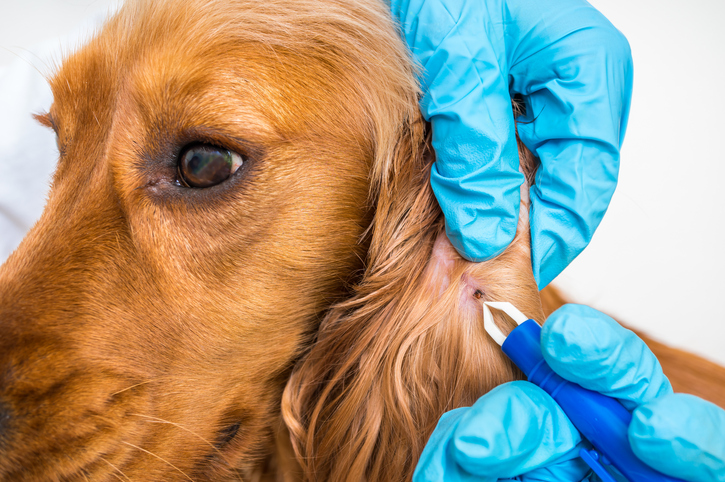Finding a tick anywhere on your pet makes for a stressful time! Knowing how to keep your pet tick-free is great preventative pet care in that it keeps everyone safe from dangerous diseases transmitted by tick bites. You should also know what to do if your efforts fail and you find a tick attached to your pet’s skin.
Keep reading below on pet care tips to help you use the right safeguards, inspect your pet for ticks after they’ve been outdoors, and why it’s best to consult your veterinarian right away.
How Tick Bites Can Cause Serious Harm
Ticks are parasites that can be found in city parks, forest and meadow areas, and your own backyard. Many pet owners don’t take tick warnings seriously enough and rely on simple tick and flea collars to keep their pets safe, only to have their beloved pets infected with a harmful disease.
Lyme disease, for example, is just as debilitating for pets as it is for people, and is becoming more and more widespread in BC. Other parasitic diseases, such as anaplasmosis, can be terrible, too, and the symptoms are often difficult to diagnose.
Use good preventative measures to keep your pet safe, and see that your lawns, bushes, and trees are trimmed to reduce the tick population in your yard. Keeping your dog or cat indoors during the height of the tick season can help, and be sure and check your pets carefully for ticks after outdoor exercise or playtime.
Why Your Veterinarian is the Best Person to Remove a Tick
You can find instructions for removing ticks from pets, however nothing quite prepares you for the dangers of attempting this job yourself:
- It’s difficult to get your pet to remain motionless—which they must be—while you do the job.
- If you leave any part of the tick behind, you must take your pet to a veterinarian to dig it out.
- Gloves must be worn for your own safety.
- If the insect is twisted or squeezed while being removed, reaction to the embedded tick parts can cause discomfort and infection.
These are all good reasons to play it safe and take your pet to a veterinarian for help.
There are a Variety of Preventative Measures to Use against Ticks
Work with your veterinarian to come up with the best kind of pet care plan to protect your four-legged friend. Pets that live outside, or are used to running free over large territories, or are brought along on camping trips in the woods, are more at risk from tick bites than indoor pets. However, even a pet that is indoors most of the time can pick up a tick bite almost anywhere outside.
Here are some of the Standard Safeguards:
- Topical medication – Such products work very well but you must choose carefully and follow all directions faithfully. Many products are available through veterinarians and pet stores, however it’s best to use a veterinary approved product. Ask your veterinarian for advice and assistance with these products as they vary in the spectrum of the ticks they cover. Your vet can help you determine what product is best suited to your pet based on their size, lifestyle, and so on.
- Oral medication – These products are safe and effective protection against ticks and even fleas, and should be administered by your veterinarian. These are almost as effective as topical medication and are very useful for dogs who love water! Again, consult your veterinarian on which oral products would best suit your pet.
- Tick shampoos – Medicated ingredients in a tick shampoo will kill ticks, however this is not the best plan for either your cat or dog because their effectiveness doesn’t last very long. The aforementioned products (topical and oral) are much better and safer preventative products.
Keep your pet tick-free and safe with proven preventative measures. Check them after they’ve been outdoors during the height of tick season. Lastly, if your pet is bitten despite your best efforts, get professional help to remove the tick.
Creative Commons Attribution: Permission is granted to repost this article in its entirety with credit to Hastings Veterinary Hospital and a clickable link back to this page.






